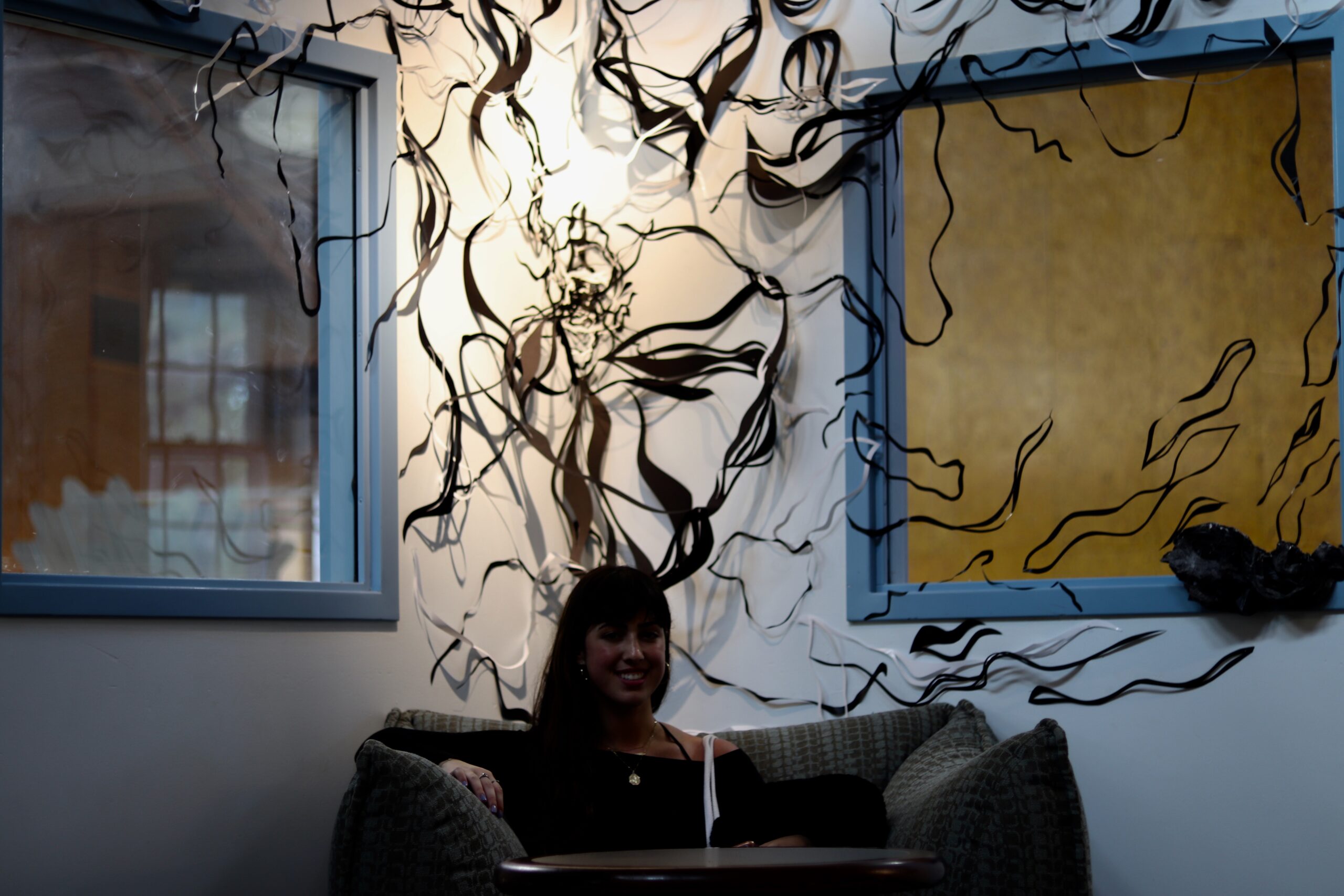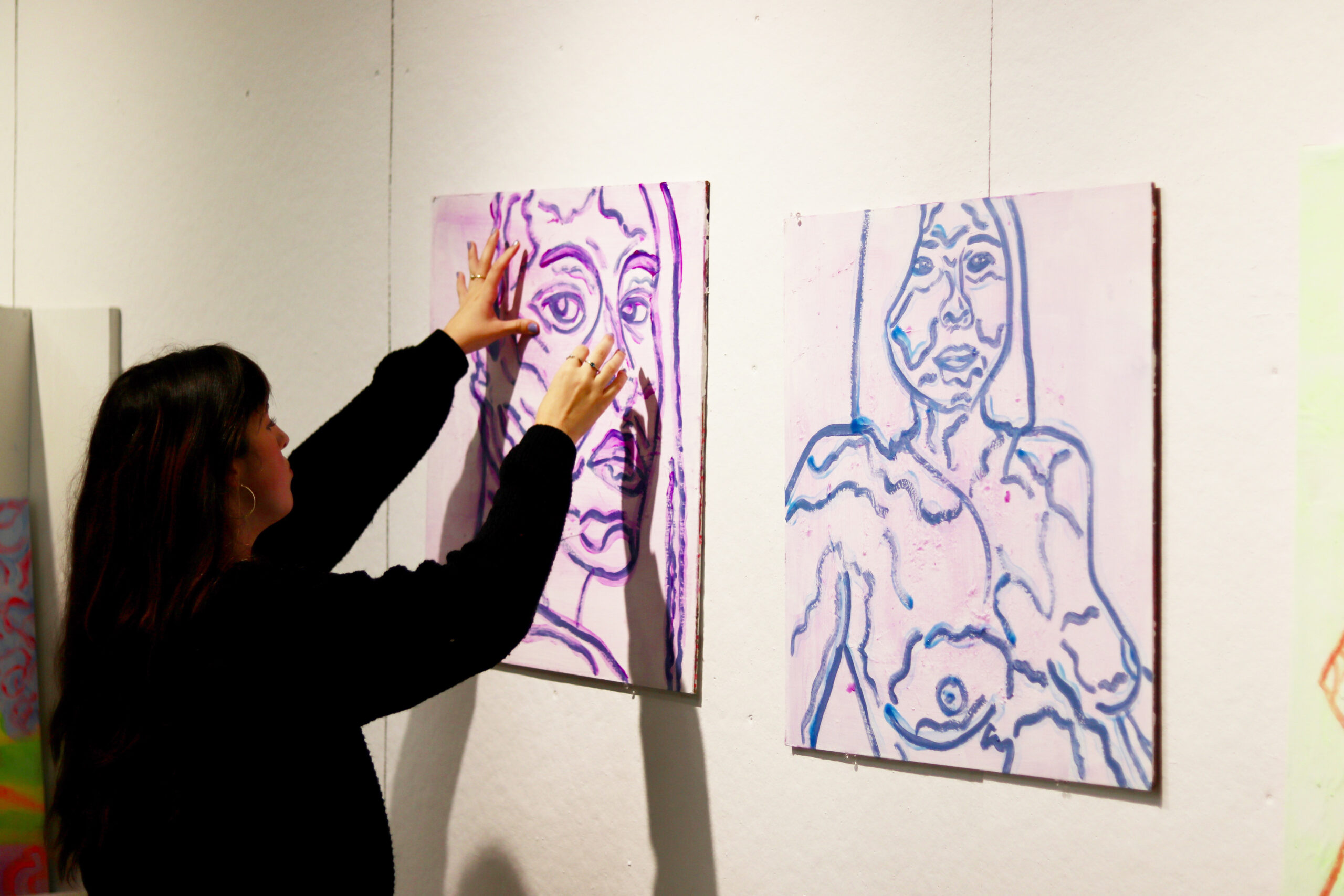Portrait of an Artist: Farradas ’19 redefines womanhood
September 28, 2018
 Mackey O'Keefe
Mackey O'KeefeCamille Farradas is a member of the Bowdoin Class of 2019 and a visual arts major. She received two Bowdoin grants to work on her art this past summer and will be featured in the Kaempfer Grant show on October 10. Her installation is currently on display in the Blue Room of the David Saul Smith Union.
This interview has been edited for length and clarity.
The Bowdoin Orient: When did you begin making art?
Camille Farradas ’19: I didn’t take a studio art class until my freshman year here, so I’d never really considered myself an artist at all. Even today, it feels strange taking on that title; it still feels new to me. But I definitely had a big influence of art growing up … I took AP Art History in high school, which I loved, and so a lot of my experience with art and making art is rooted in that.
Q: What is your preferred medium?
A: I definitely fell in love with painting. I took my first painting class sophomore fall, and I did a master copy of “Danaë” by Gustav Klimt, which was my first real painting, and then I was kind of just amazed by what I produced. And then I took a digital media class with [Visiting Professor of Art and Digital and Computational Studies] Erin Johnson, and that was totally foreign to me, but I really enjoyed making videos and having a sound component and making something that comes alive in a different way.
Q: Could you tell me a bit about what you did this summer?
A: This summer I received the Gibbons Scholarship and the Kaempfer Grant. [For the Gibbons Scholarship], I was working for Erin Johnson, and we put together this biennial piece called “A Long Wait,” which happens on Fort Gorges, off the coast of Portland. It’s this day long, interactive, immersive experience [where] everyone will have a handheld old-timey radio and will walk through the fort, which has different transmitters set up so people can pick up different stories as they go. And then the Kaempfer Grant was through the visual arts department. The premise of my project was exploring the female nude, which is such a staple in the canon of art history.
Q: Do you have any preferred subjects in your work?
A: It honestly always comes back to womanhood and especially being a Latina woman and a Cuban woman. For my paintings, I’ll bring in women of color on this campus to model for me, and I’ll pull up different, very famous female nudes in art history, which were usually painted by white men of white women for white men. And I usually take those poses and show them to my model and ask if they can do them for me … They become these strong images of female nudes, which I think are really confrontational, and they ask a lot of questions about why in art history male nudes [have] been glamorized or seen as totally ok, whereas the female nude is usually for sexual consumption.
In my videos, I tend to deal with subjects that are more about what it means to be a woman conceptually. I just did one on hair braiding and how hair stands as a symbol of time and [how it] is a very gendered act … it becomes a symbol of female community and connection.
 Mackey O'Keefe
Mackey O'KeefeQ: How would you describe your artistic process?
A: I have a very clear-cut vision when I think of something for my videos, and I set them up very precisely … when it comes down to actually using my paint and canvas size and things like that, it’s way more intuitive. My color choices are completely on the spot and random. I never paint for just one hour; I’ll usually be there for at least six.
Q: Who are some of your artistic inspirations?
A: I love the work of Ana Mendieta. She’s a Cuban woman who has this really tragic story—she died really young, but she was very successful as an artist and did a lot of work about the female body. Her work is way more graphic and visceral than mine—she’ll use real blood and things like that. I also love Gustav Klimt and his paint and surface textures. I enjoy Marilyn Minter as well; she does these large-scale paintings that focus on the glamorization of women: a lot of jewelry, a lot of makeup, a lot of lavishness, but she pushes it to the point where it’s grotesque.
Q: Is there anything you’re hoping to experiment with in future artworks?
A: I’m really intrigued by murals. I think the subject I focus on, womanhood, would be really interesting in that setting. I think for the show I have coming up I’m going to try to do a mini-version of a mural, so we’ll see how that works out.

Comments
Before submitting a comment, please review our comment policy. Some key points from the policy: